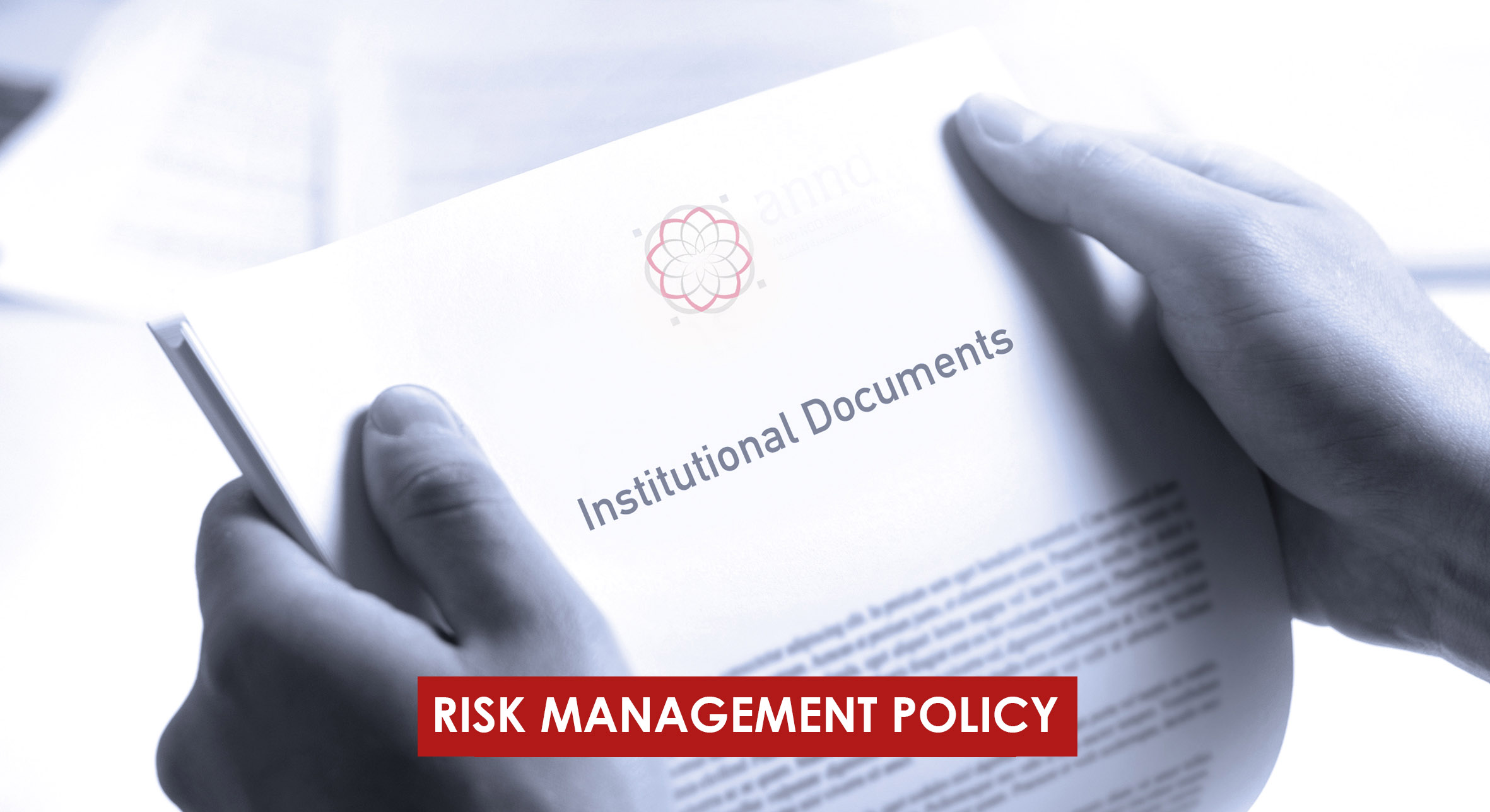
Risk Management Policy – Please click here to download the file
1. PURPOSE
The purpose of this Risk Management Policy is to establish a comprehensive framework for identifying, assessing, and managing risks across the Arab NGO Network for Development (ANND). This policy aims to ensure that the organization can anticipate and address potential threats, enhance decision-making processes, and safeguard its assets while fostering a culture of resilience and adaptability.
2. SCOPE
This policy encompasses all areas including programs, and projects in which ANND is involved, and ensures a holistic and inclusive approach to risk management.
3. PRINCIPLES
3.1 Proactive Approach:
ANND is committed to adopting a proactive approach to risk management, actively identifying and assessing potential risks before they escalate. This involves engaging stakeholders at all levels to contribute to minimize the negative impacts to project scope, budget, schedule and quality and maximize opportunities to improve the project’s objectives with lower cost, shorter schedules, enhanced scope and higher quality.
3.2 Integrated Process:
Risk management will be seamlessly integrated into all aspects of decision-making and strategic planning, ensuring that it becomes an inherent part of ANND's organizational culture.
3.3 Continuous Improvement:
ANND recognizes the dynamic nature of its operating environment and is dedicated to the continuous improvement of its risk management processes. Lessons learned from experience and changing circumstances will inform updates to the risk management framework.
4. RISK MANAGEMENT FRAMEWORK
4.1. Risk Identification
ANND systematically documents risks and lessons learned during team meetings, coordination committee meetings, and general assembly meetings. These risks are captured in meeting minutes and reports and are reflected in a comprehensive risk matrix.
4.2. Risk Assessment
ANND has developed a risk matrix that undergoes biannual reviews. This systematic approach ensures that the organization maintains an up-to-date understanding of its risk landscape. The risks identified through this process are strategically categorized into two primary groups, namely contextual risks and operational risks. This categorization allows for a targeted and nuanced approach to risk mitigation and management.
● Contextual Risks: These pertain to external factors such as political, economic, social, and environmental conditions that may impact ANND's mission and operations. Understanding contextual risks is crucial for proactive decision-making and adaptive strategies in response to the broader socio-political landscape.
● Operational Risks: These encompass risks associated with internal processes, procedures, and day-to-day activities. Operational risks may include issues related to governance, financial management, human resources, and technology. Categorizing these risks separately enables ANND to implement tailored measures to enhance operational resilience.
4.3. Risk Mitigation
For each identified risk, ANND incorporates mitigation strategies into its planning processes. These strategies are designed to reduce the impact and likelihood of risks materializing and to enhance the organization's ability to respond effectively.
4.4. Monitoring and Reporting
ANND conducts continuous monitoring of identified risks and incorporates this information into its reporting mechanisms. Risks are communicated to members during the annual report and shared with donors through various progress reports, ensuring transparency and accountability.
5. ROLES AND RESPONSIBILITIES
5.1 Coordination Committee
The Coordination Committee, given its close connection to the national context, plays a crucial role in identifying risks. Committee members actively contribute to a nuanced understanding of the context in which ANND operates.
5.2 Executive Management
The Executive Management holds a key role in defining and implementing mitigation strategies. Their strategic oversight ensures that risk management aligns with ANND's overall organizational objectives.
5.3 ANND Staff
All ANND staff members are responsible for identifying and reporting risks related to their respective projects. Their direct involvement in the reporting processes contributes valuable insights to the risk management framework.
6. REVIEW AND REVISION
This Risk Management Policy will undergo an annual review, or more frequently if circumstances dictate, to ensure its continued relevance and effectiveness. Regular reviews will incorporate feedback, emerging risks, and evolving organizational needs to maintain a robust and adaptive risk management framework.
7. IMPLEMENTATION TOOL
The Risk Management Matrix is the main implementation tool for this policy. This tool serves as a dynamic guide for identifying, assessing, and mitigating risks throughout the organization, ensuring a systematic and proactive approach to risk management. Regular updates and reviews of the matrix will contribute to its effectiveness in supporting ANND's risk management objectives.
Please click here to download the file
Recent publications

ANND Newsletter - 2025 in the Arab Region: Wars, Crises, and Civic Space Under Pressure
